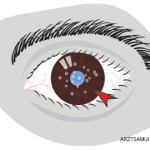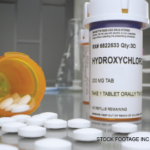Dr. Rosenbaum says that when his rheumatologist colleagues are evaluating patients with eye disease, they have two jobs: determine if the eye disease is related to a systemic problem and provide a risk–benefit analysis of potential therapies. Both need to be done in conjunction with an ophthalmologist, and both physicians should work to communicate in real time.
“It’s a difficult process, because first of all, the patient is a ping pong ball in the middle,” Dr. Rosenbaum says. “Let’s say that doctor to whom [the patient has] gone to is an ophthalmologist and the ophthalmologist says [to them], ‘Well, you have a serious problem, but before I do anything, you’ve got to see a rheumatologist, and it’s going to be six weeks before you get in.’ … We have to communicate.”
Language barrier: That communication extends to interpreting abbreviations associated with physical exams. In rheumatology, SLE stands for systemic lupus erythematosus. In ophthalmology, it stands for slit-lamp examination. In ophthalmology, RSVP stands for redness, sensitivity to light, vision change and pain or persistence in symptoms. A rheumatologist may read that abbreviation as simply an invitation to respond to a note left by a prior physician.
“It can get complicated,” Dr. Rosenbaum says.
An additional complication surfaced last summer for both specialties when the U.S. Food and Drug Administration (FDA) approved adalimumab to treat adults with non-infectious intermediate, posterior and panuveitis.1 (Note: Dr. Rosenbaum disclosed in an interview that he serves as an advisor to AbbVie Inc., the drug’s manufacturer.) The federal sign-off drew attention from rheumatologists because the treatment, which is common for rheumatoid arthritis, juvenile idiopathic arthritis, ankylosing spondylitis, psoriatic arthritis and other conditions, had never before been approved for an ophthalmic disease. Dr. Rosenbaum says the drug can be valuable, but for patients with eye issues, it is the first non-corticosteroid therapy. In that vein, the FDA in 2014 allowed an orphan drug designation for treating certain forms of non-infectious uveitis.2
Before an ophthalmologist prescribes the drug to a rheumatic patient, Dr. Rosenbaum argues they should be in touch with that person’s rheumatologist—and vice versa.
“Ophthalmologists see patients with uveitis, but feel uncomfortable prescribing a drug, [such as] adalimumab. And rheumatologists should never prescribe adalimumab for uveitis on their own [without an ophthalmology consult] because a rheumatologist can’t gauge how active the inflammation is,” Dr. Rosenbaum says. “Again, both parties need each other, and it’s like a marriage.”


